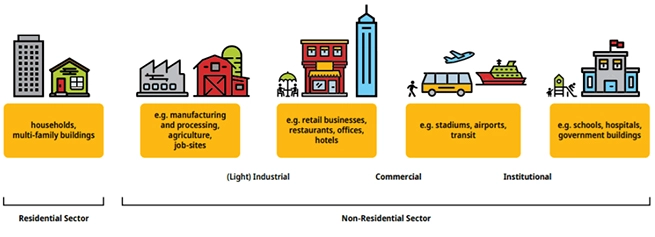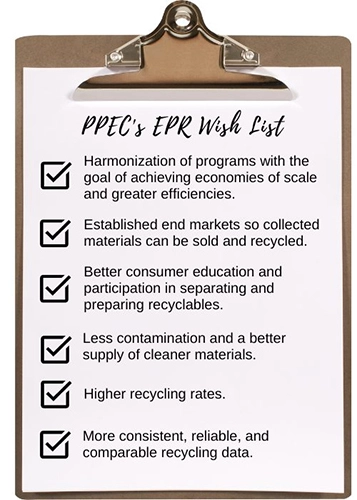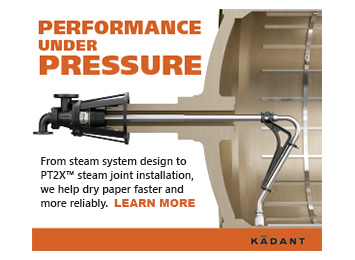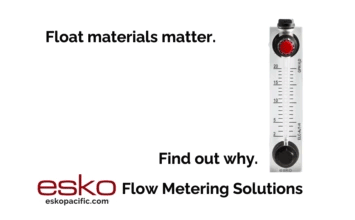Last year the Paper and Paperboard Packaging Environmental Council (PPEC) asked if we were putting the cart before the horse when it came to considering a regulated Extended Producer Responsibility (EPR) approach for recycling packaging in the non-residential sector, commonly known as the Industrial, Commercial and Institutional or IC&I sector.
Revisiting that question now and the answer seems to be…maybe.
Quebec Expanding EPR to the IC&I Sector
Stakeholders, including PPEC, are closely watching Quebec – the only Canadian province to legislate EPR for IC&I – as it prepares to expand EPR into the IC&I sector as part of the province’s move to modernize its recycling system. Quebec is phasing in the expansion, which begins in 2025 with schools, outdoor public areas, and similar IC&I establishments (defined as “comparable, in nature and quantity, to those meant for the residential sector”), while other parts of the sector will be expanded between 2027 and 2030.
But there are still many unanswered questions about how EPR for IC&I will work in Quebec, what the fees will be, and how existing contracts with private recyclers will be impacted.
Meanwhile, other provinces are continuing to explore the possibility of applying EPR to the IC&I sector, with the latest being British Columbia.
British Columbia Consulting on Developing Approach for IC&I Packaging
The BC government committed to developing an approach for IC&I packaging by 2025, as outlined in its EPR five-year action plan, and they are currently consulting on how to manage packaging and paper waste from the non-residential sector. The government’s Consultation Discussion Paper outlines many potential options, including expanding EPR to the IC&I sector and introducing EPR for a specific sector, among other possibilities.
Putting the Cart Before the Horse: PPEC’s Perspective on EPR for IC&I
While PPEC supports efforts to increase recycling and waste diversion, and consultations are an important way to have informed discussions, we remain concerned that we are putting the cart before the horse.
The cart being IC&I and the horse being EPR.
We should not assume that the same approach for residential recycling will work for the IC&I sector for a variety of reasons.
The Difference Between IC&I and Residential
The IC&I sector is very different than the residential sector. One side features waste and recyclables collected from homes and apartments. And on the other side, materials are generated from a variety of distinct locations: manufacturing facilities, retail and grocery stores, malls, restaurants, offices, hotels, stadiums, airports, schools, hospitals…the list goes on.

In the IC&I sector, businesses are responsible for managing their own waste and recyclables, and typically businesses contract directly with waste management service providers. But we understand that not all establishments necessarily do that, and even with those that do, there may be challenges with recycling the materials once collected (e.g., contamination, quality issues, lack of end markets to sell the materials).
But when it comes to paper packaging, PPEC members are often the end markets as mills buy back used cardboard and paper materials from grocery stores and other commercial entities, allowing those materials to be responsibly recycled and reused to make new paper packaging products.
Differences in where materials come from need to be taken into consideration when looking for solutions to increasing waste diversion in the IC&I sector, as they can have impacts on how materials are collected, managed, and ultimately recycled.
Transitioning to EPR for Residential Recycling Programs
In many ways, EPR for residential paper and packaging is in its infancy in Canada. While we have had legislated programs in place for years, decades even, British Columbia is the only province with a true EPR model. Most provinces are either in the process of developing or transitioning to full producer responsibility models, where producers fund and operate recycling programs, from existing program models where producers only fund the costs of programs operated by municipalities.
It will take time to see if this shift to true EPR results in higher recycling rates and program efficiencies.
PPEC has high hopes for what true EPR could achieve for Canadian residential recycling programs, but we are not there yet.

While PPEC members have not historically been obligated stewards of EPR programs – our members typically engage in business-to-business transactions, and do not directly supply finished products to consumers – the success of recycling programs is critical to our industry, which relies on using recycled content as its primary feedstock.
PPEC members represent several different components of the paper packaging recycling value chain: as providers of recyclable paper-based packaging, processors and recyclers of collected paper materials, and end markets who buy back recycled fibres to reuse in their operations.
Our industry has been a pioneer in recycling for decades, implementing a circular economy for paper packaging long before it was widely recognized, driven not by regulation or EPR, but because it makes environmental and business sense to manufacture paper packaging products using recycled fibres.
And while we may not represent obligated producers, the decades of experience PPEC members have with recycling – which includes mills buying back used paper materials directly from the IC&I sector to use in their operations – provides our industry with insights that we hope governments and policymakers will consider. Let’s get EPR for residential right first before we put the cart before the horse by applying it to the IC&I sector.
 Rachel Kagan
Rachel Kagan
Executive Director
The Paper & Paperboard Packaging Environmental Council (PPEC)













